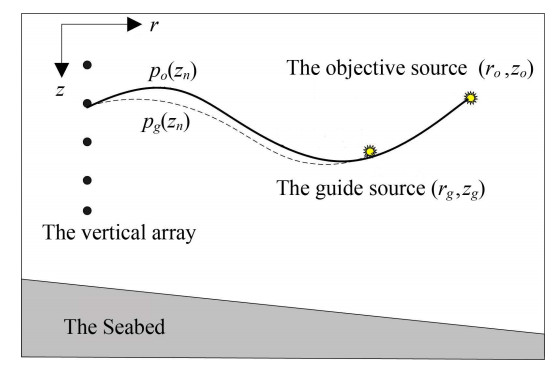In shallow water environment, sonar performance is significantly limited by complex acoustic environment. So the target localization technology becomes the focus and hot spot in the underwater acoustics research.
With the progress of signal processing technology and acoustic modeling technology, matched field processing technology appeared in the late 1980s and has been the focus of underwater acoustic research in the past few decades. Matched field processing technology has made great progress in target detection, environmental parameters estimation and so on.
However, matched field processing technology, which is based on field modeling, has high requirement on field modeling and is vulnerable to environment changes. As a result, many mismatch problems are produced. Therefore, searching for a new localization method which doesn’t need accurate priori knowledge of the environment is of great significance.
To overcome the shortcomings of the matched field processing technology, virtual receiver technique is used for source ranging by researchers from the Institute of Acoustics of the Chinese Academy of Sciences.
A virtual receiver is constructed by correlating the two signals received by a vertical line array respectively from the guide source and the objective source. The vertical receiving array, the objective source and the guide source are placed as shown in Fig. 1. Consider that the water volume is horizontally uniform layered medium.

Fig. 1 Schematic of the shallow-water waveguide environment for virtual receive (Image by YAO)
In the following, the slope of the interference striation of the virtual receiver field is estimated using relevant signal processing method such as Radon transform. Combining with the waveguide invariant β can yield the range of the objective source finally.
Through numerical simulations and processing trial data collected from the experiment carried out in the South China Sea in 2004, the virtual receiver technique for broadband source ranging under the slope-bottom shallow water environment is discussed.
Under lower frequency bands with appropriate vertical array, source ranging results are satisfactory. Besides, with the frequency increasing, the frequency bands should be broadened to get clear and complete interference stripes.
Moreover, the requirement for the vertical array is higher with the frequency increasing. At the lower frequency bands, good ranging results through experiment data processing are presented, while at the higher frequency bands bad ranging results are presented with incomplete vertical array.
Funding for this research came from the National Natural Science Foundation of China (10774156).
Reference:
YAO Meijuan, MA Li, LU Licheng and GUO Shengming. Performance Analysis of Source Ranging by Use of Virtual Receiver Technique under Different Frequency Bands. Chinese Journal of Acoustics (Vol. 34, No. 4, pp. 387-400, 2015).
Contact:
YAO Meijuan
Institute of Acoustics, Chinese Academy of Sciences, Beijing 100190, China
Email: yaomeijuan88@mail.ioa.ac.cn


